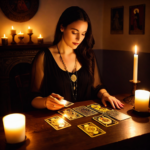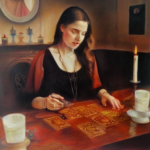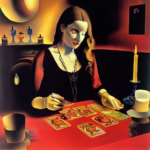The landscape of digital art is rapidly evolving. A few years ago, a groundbreaking technology has emerged, capturing the imagination of artists, designers, and enthusiasts alike. It’s called Stable Diffusion – a state-of-the-art deep learning model, a model that is at the forefront of this revolution, because it is offering unprecedented capabilities in generating images from textual descriptions, and even based on images themselves. This article delves into the diverse art styles that Stable Diffusion can produce, highlighting its versatility, the influence of training data, and the creative potential it unlocks. Let’s have a look.
The Versatility of Stable Diffusion
At its core, Stable Diffusion is designed to transform textual prompts into visual masterpieces, ranging from photorealistic images to abstract compositions. Its versatility is a testament to the advancements in artificial intelligence, enabling the generation of artwork in a plethora of styles including impressionism, surrealism, anime, and more. This flexibility not only democratizes artistic creation but also opens up new avenues for experimentation and innovation.
So, how do you implement a specific art style in Stable Diffusion?
Implementing a specific art style in Stable Diffusion involves guiding the AI model to generate images that adhere to the characteristics of the desired style. This can be achieved through various methods. The most common and obviously the most simple method would be to include crafting detailed text prompts and include a desired art style. There are cheat sheets available with a list of art styles, but also listing specific artists. Therefore, it is possible to mix either a few different art styles in one image, but also mix art style with a specific artist that belongs to a totally different artistic style.
Let’s have a look what results will using different artistic styles, combined with specific artists, bring.
- original image
- added Rembrandt to the original prompt
- added Salvador Dali to the original prompt
Here we have a original image that Stable Diffusion and we generated it with a prompt:
“Generate an image of a woman reading tarot cards, capturing a mystical and intriguing atmosphere. She should be seated at a table with tarot cards spread out in front of her, illuminated by the soft glow of candlelight. The setting should evoke a sense of mystery and anticipation.”
and here’s a negative prompt:
“bad anatomy, bad hands, three hands, three legs, bad arms, missing legs, missing arms, poorly drawn face, bad face, fused face, cloned face, worst face, three crus, extra crus, fused crus, worst feet, three feet, fused feet, fused thigh, three thigh, fused thigh, extra thigh, worst thigh, missing fingers, extra fingers, ugly fingers, long fingers, horn, extra eyes, huge eyes, 2girl, amputation, disconnected limbs, cartoon, cg, 3d, unreal, animate, forest, trees”
And, then we updated the prompts for the first image with “salvador dali, surrealism” and for the second image with “imitate artist Rembrandt, pencil drawing”. You can see the results in the gallery above.
What the influence of training data on art style
The array of art styles that Stable Diffusion can generate is largely dependent on its training dataset. The model learns to replicate and combine styles based on the diversity of images it has been exposed to. Consequently, a dataset rich in a variety of art periods, movements, and techniques allows Stable Diffusion to offer a broader spectrum of stylistic outputs.
Customization with Text Prompts
As we’ve seen in the practical example above, one of the most compelling features of Stable Diffusion is the ability to guide the artistic process through detailed text prompts. Users can specify not only the subject matter but also the desired art style, effectively directing the model to produce images in the vein of Rembrandt, Salvador Dali, or any other style included in its training. This level of customization empowers users to explore their creative visions in ways that were previously unimaginable.
Advanced Techniques for Style Control
If you’re one of those who seek more control over the generated art styles, techniques such as fine-tuning the model on specific datasets or utilizing style embeddings offer additional precision. These fine tuning methods enhance Stable Diffusion’s ability to capture the essence of particular art styles, enabling artists to create works that are more aligned with their creative intentions. Of course, fine tuning is an advanced technique and if your capabilities do not align with it, we suggest adjusting prompting to better suit your needs.
In Conclusion
As with any powerful tool, the capabilities of Stable Diffusion bring about ethical considerations, particularly regarding style imitation and copyright. The ease with which it can replicate the styles of existing artists raises questions about copyright and artist attribution. It is crucial for users to navigate these issues with sensitivity and respect for the original creators, especially when producing work that closely mimics the style of living artists or those whose copyrights are still in effect.
Stable Diffusion is not just a tool for replication but a canvas for creativity. By combining styles, incorporating elements from multiple artistic movements, or even attempting to forge new styles, users can push the boundaries of traditional art. This level of experimentation is one of the most exciting aspects of Stable Diffusion, offering a playground for creative expression that is continually expanding.


